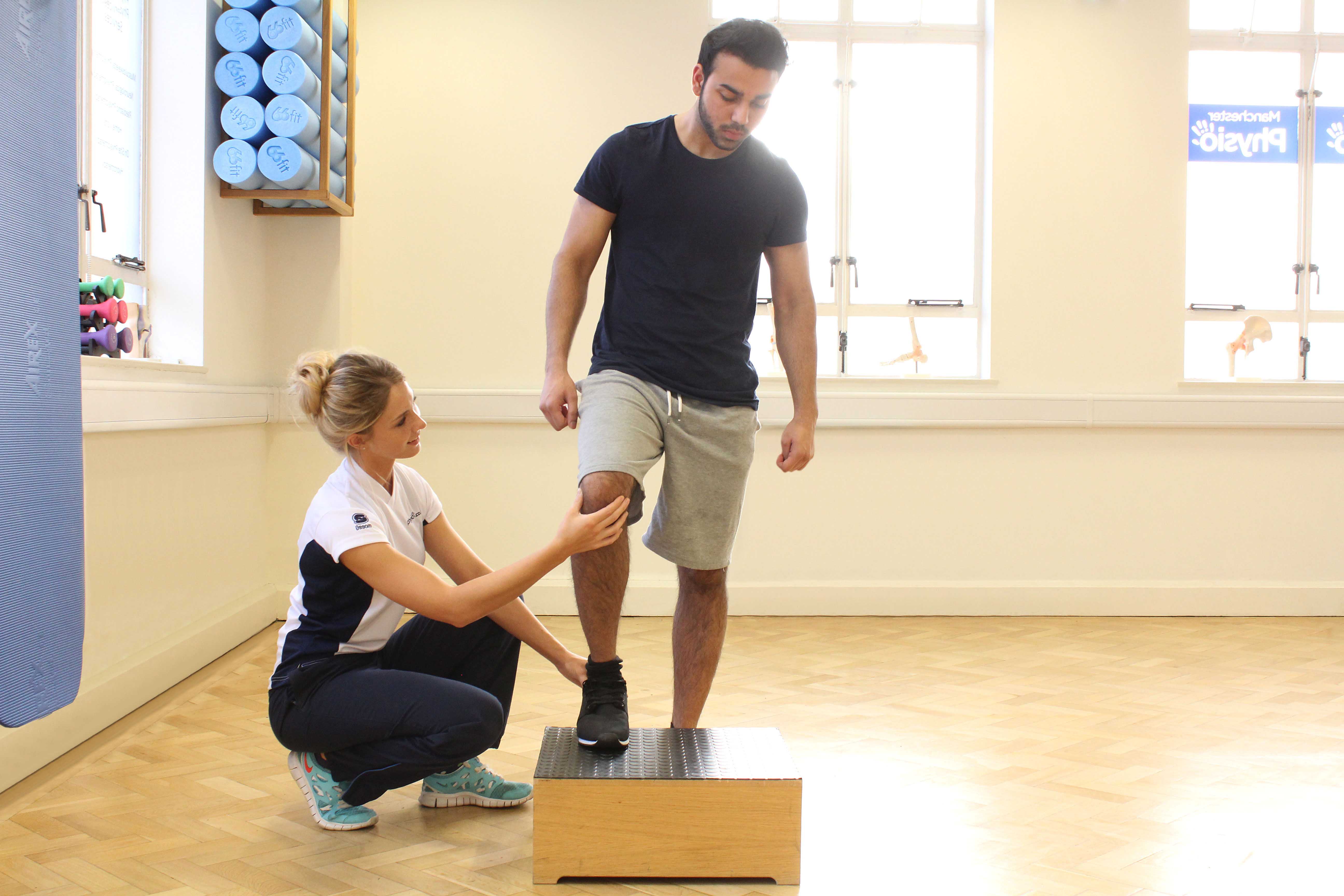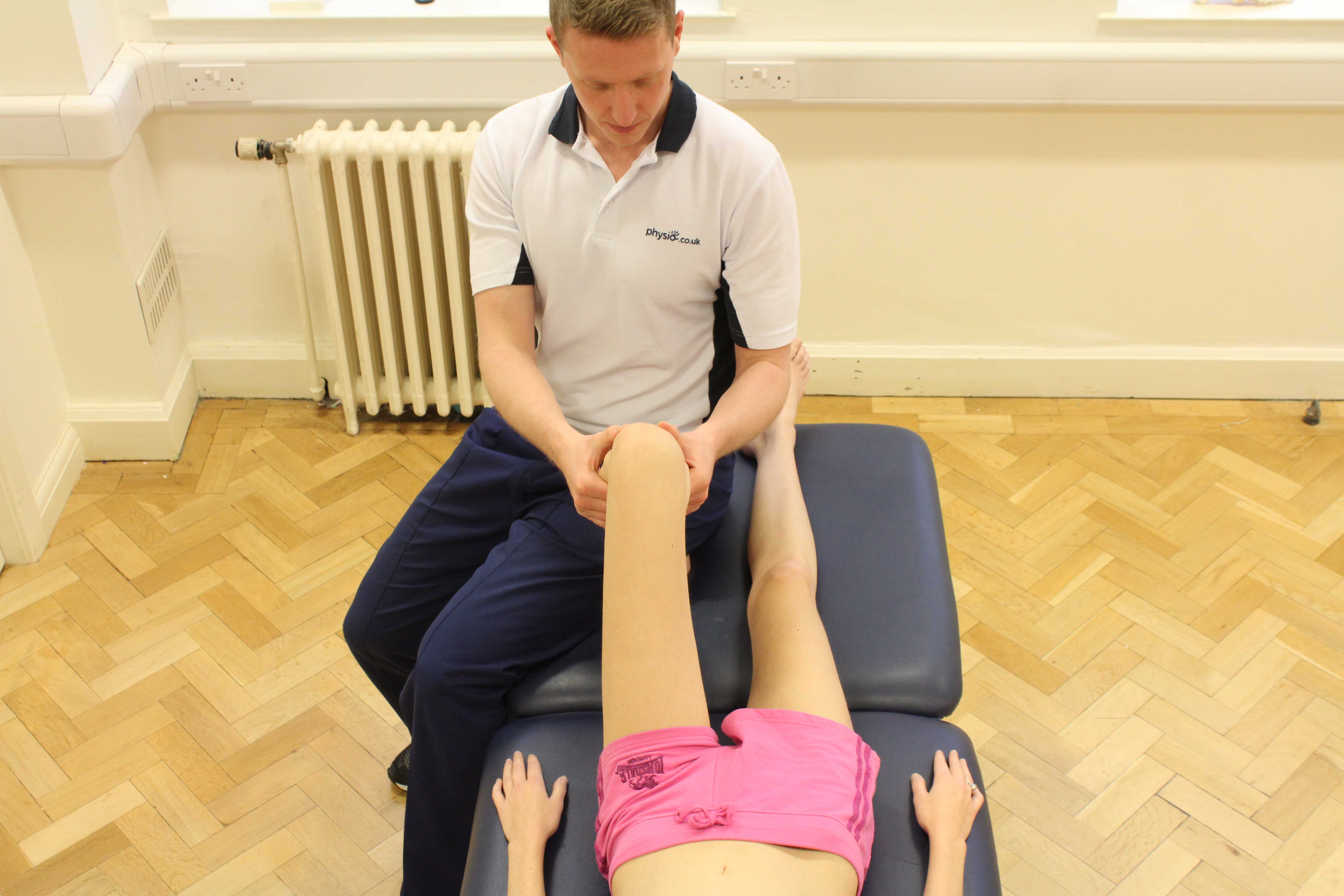What is a medial collateral ligament injury?
The medial collateral ligament is a tough band of tissue that provides support along the inside of the knee joint. A medial collateral ligament injury is a sprain (or tear) to this ligament. Physiotherapy is an effective treatment for a medial collateral ligament injury.
How does a medial collateral ligament injury happen?
The medial collateral ligament occurs if the knee is caused to bend inwards, overstretching and injuring the medial collateral ligament. This commonly occurs from a blow to the outside of the knee whilst the foot is planted on the ground.
 Above: Progressive strengthening exercises supervised by therapist
Above: Progressive strengthening exercises supervised by therapistWhat are the symptoms of a medial collateral ligament injury?
The initial sensation felt when the medial collateral ligament is injured is pain on the inside surface of the knee. Other symptoms include:
What should I do if I have a medial collateral ligament injury?
You can speed up your recovery by following a simple RICE regime over the first 24–48 hours. Swelling is necessary for your injury to heal; however, too much swelling can delay healing. The RICE regime (Rest, Ice, Compression, and Elevation) reduces blood flow to the injured area and, therefore, can reduce swelling. Rest involves limiting the amount of weight you put through your leg. The use of crutches may be required if you are having difficulty walking. Ice should be applied to the knee for 15–20 minutes every 1–2 hours. It should be applied using a bag of frozen peas or crushed ice wrapped in a damp cloth. Compression involves the application of an elastic bandage around the injury site. It should be firm but not tight. Elevation involves lying with your knee resting on a chair or pillows so that it is above the level of your heart. You should continue the RICE regime until you have been assessed by a physiotherapist. This should ideally be within the first 48 hours of the injury.
What shouldn’t I do if I have a medial collateral ligament injury?
Following injury to the medial collateral ligament, you should not perform activities which increase blood flow to the injured area. These include hot showers, heat rubs, the consumption of alcohol and excessive activity. These activities can increase the bleeding and swelling around the injured ligament and prolong your recovery.
 Above: Therapist performing knee assessment
Above: Therapist performing knee assessmentPhysiotherapy treatment for a medial collateral ligament injury.
Physiotherapy is important in the treatment of a medial collateral ligament injury of the knee. Initially, your physiotherapist can determine which tissues and structures have been damaged and the extent of this damage. In some cases, referral for imaging techniques such as an X-ray, ultrasound, CT or MRI scans may be required to confirm your diagnosis and future management. After the diagnosis, your physiotherapist will then be able to determine how long your injury should to take to heal and develop an appropriate treatment plan. Treatment may include:
Could there be any long-term effects from a medial collateral ligament injury?
Most medial collateral ligament injuries heal within a number of weeks. Long term effects can be caused if other structures are damaged at the same time as the medial collateral ligament. Similarly, recovery may be delayed if the injury is not diagnosed and is not managed appropriately. This is because this may result in a poorly healed ligament which is susceptible to re-injury.
To arrange a physiotherapy appointment call Physio.co.uk on 0330 088 7800 or book online.

 0330 088 7800
0330 088 7800


































